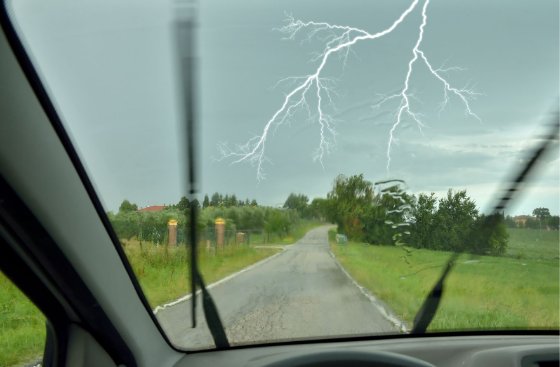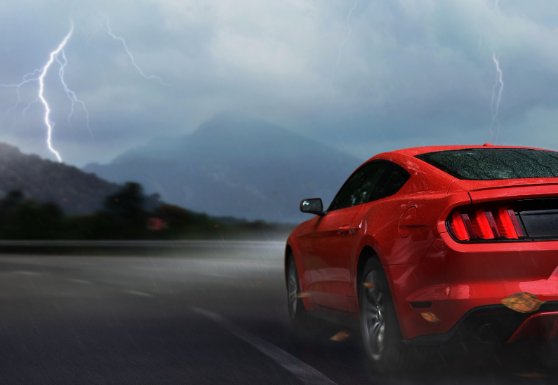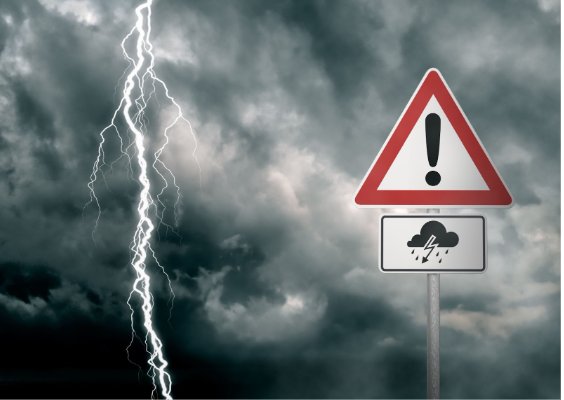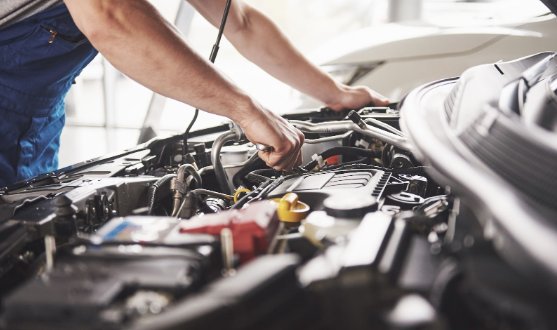Have you ever thought about what happens if lightning hits your car during a big storm? Let’s take a closer look at car insurance to see if it covers your car from lightning strikes. We’ll learn about the parts of your insurance that protect you, like comprehensive coverage, and talk about what you have to pay for (deductibles). We’ll also look at when insurance might or might not cover damage from lightning.
Understanding Comprehensive Car Insurance
It protects against damages not caused by car accidents. Think of it as a shield against things out of your control, like theft, vandalism, or storms, including those scary lightning strikes. While you have other insurances like liability or collision, comprehensive coverage is the one that steps in for these unique situations.

Lightning Damage to Vehicles: Coverage and Claims
If lightning ever strikes your car and you have comprehensive coverage, insurance has your back. First, you’d pay a small part of the repair costs, known as a deductible. Then, insurance covers the rest. If your car is too damaged to fix, insurance pays you its value before the strike, minus the deductible. To get this help, you need to tell your insurance company about the damage, which is called filing a claim.

The Science and Impact of Lightning Strikes on Vehicles
When lightning hits a car, it can be dramatic. The lightning looks for the quickest way to the ground, often using the car as a path. This can damage the car’s outside and its electrical system inside. Some cars get minor damage, while others might not be fixable. But here’s a cool fact: if you’re inside the car during a storm, it’s usually safe because of the car’s design that helps lightning pass around you, not through you.

Identifying Lightning Damage
When a storm unleashes its fury, the possibility of lightning striking your car becomes a real concern. Such an event can leave behind a range of damages, some obvious and some hidden beneath the surface, potentially compromising your vehicle’s safety and functionality. Here’s a detailed guide to identifying signs of lightning damage and the steps you should take to address it:
Visible Damage
- Burn Marks: Look for scorch or char marks on the car’s exterior, which indicate a direct strike.
- Broken Windows: Windows may shatter from the force of a lightning hit.
- Punctured Tires: The electrical charge can cause sudden air expansion, potentially leading to tire blowouts.
Invisible Damage
- Electrical System Malfunctions: The car’s electronics may become erratic or fail completely, affecting the dashboard, lights, and engine performance.
- Battery Issues: A lightning strike can deplete or damage the car’s battery, preventing it from starting.
- Wiring Damage: Internal wiring could be fried without visible external damage, compromising safety systems like airbags.
Safety Concerns
- Unreliable Electronics: Essential components like brakes and steering systems could malfunction while driving.
- Compromised Vehicle Safety Features: Safety features, such as airbags, might not deploy in an accident if the car’s electronics are damaged.
Professional Inspection
- Mechanic’s Evaluation: If you suspect lightning has struck your vehicle, a detailed inspection by a qualified mechanic is advised. They can assess both visible and hidden damages, ensuring the car is safe to operate.
- Comprehensive Check: The mechanic should check the electrical system, battery, wiring, and any computer modules for signs of lightning-induced damage.
Understanding these signs and taking prompt action can help mitigate the risks and ensure your vehicle remains operational and safe.

Repair and Recovery Post-Lightning Strike
If lightning damages your car, report it to your insurance quickly. Showing proof, like storm reports, can help your claim. A mechanic can also confirm the damage is from lightning, which helps with your insurance claim. Fixing the car quickly is important to make sure it’s safe to drive again.

Conclusion
Having comprehensive car insurance is like having an umbrella in a rainstorm. It offers peace of mind, knowing you’re protected against unexpected events like lightning strikes. By understanding how this insurance works and what to do if lightning damages your car, you’re better prepared to handle these surprising situations.
FAQ
How can I prove that lightning damaged my car to my insurance company?
Proof can include photos of the damage, mechanic reports pinpointing lightning as the cause, and weather reports confirming the lightning storm in your area. Eyewitness accounts can also be supportive.
Are there any specific types of car insurance that don’t cover lightning damage?
Liability and collision insurance typically do not cover lightning damage. Comprehensive insurance is generally required to cover such incidents.
Will my insurance rates go up if I file a claim for lightning damage?
Filing a claim for lightning damage, which is considered a no-fault claim, may not necessarily increase your insurance rates. However, this can vary by insurance company and your claim history.
What should I do immediately if I suspect my car has been hit by lightning?
Ensure your safety first, then document the scene with photos, and avoid driving the car if you suspect electrical system damage. Contact your insurance company as soon as possible to report the incident.
How does the insurance company determine the value of my car if it’s deemed a total loss due to lightning damage?
Insurance companies typically use the actual cash value (ACV) of your car, considering its age, condition, mileage, and market value before the damage occurred, minus your deductible.
Get the right coverage for your car with tutenagency
New tutenagency customers?
Quote auto insurance online or call (334) 502-5111 to insure your vehicle.
Disclaimer: This content is for informational purposes only and should not be considered legal or financial advice. Always consult with qualified professionals in legal and financial fields before making any decisions.

